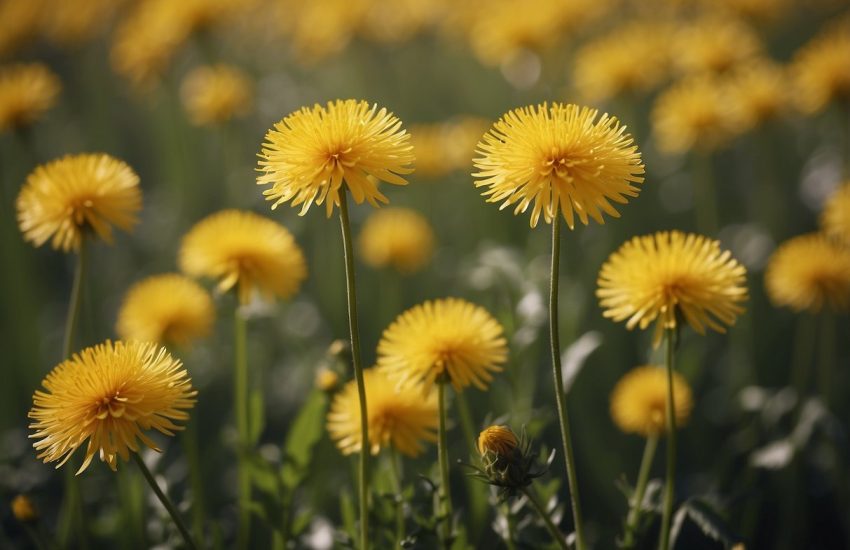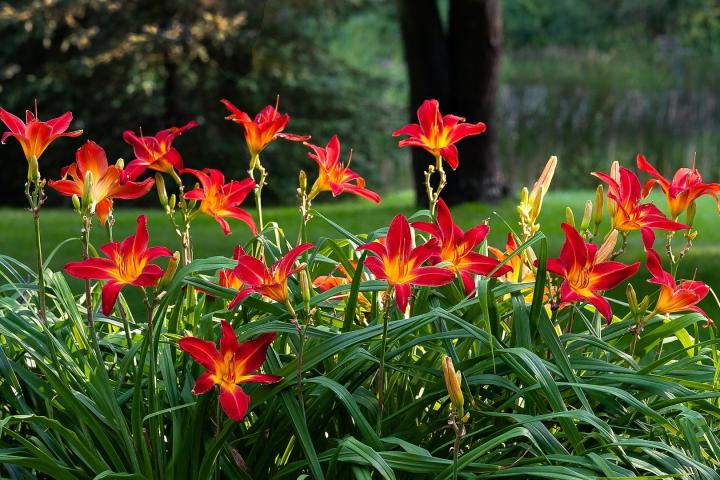How to Prune Trees and Shrubs
Introduction
Pruning helps plants thrive by eliminating disease, removing dead or diseased parts, stimulating new growth, and preserving their established form. You should master correct pruning techniques since a well-cared-for tree or shrub will benefit physically and aesthetically. When trees and shrubs are pruned properly, it creates a safer environment.
You may remove low-growing branches if they prevent passing cars or obscuring approaching traffic from sight. It’s also possible that you’ll need to clear the area of fallen branches to avoid injury or damage to property. Cut down any low, whip-like branches (particularly thorny ones) that might cause harm to pedestrians.
In certain cases, removing the undersides of neglected, overgrown shrubs is preferable to pulling up the bush and planting a new one in its place since it promotes the development of a compact, multi-trunked tree. The direction in which a plant develops may also be modified by pruning. When you cut, you stunt development in one area while fostering it in another.
Young trees need to be trained with this idea in mind so that they may have a healthy and robust branching system. Regularly cutting down on overgrowth is also crucial. Remove thick shoots, suckers (stems growing from the roots), and water sprouts (new stems that emerge from the roots) before cutting down upright branches.
What Is the Best Time to Prune Trees and Shrubs?
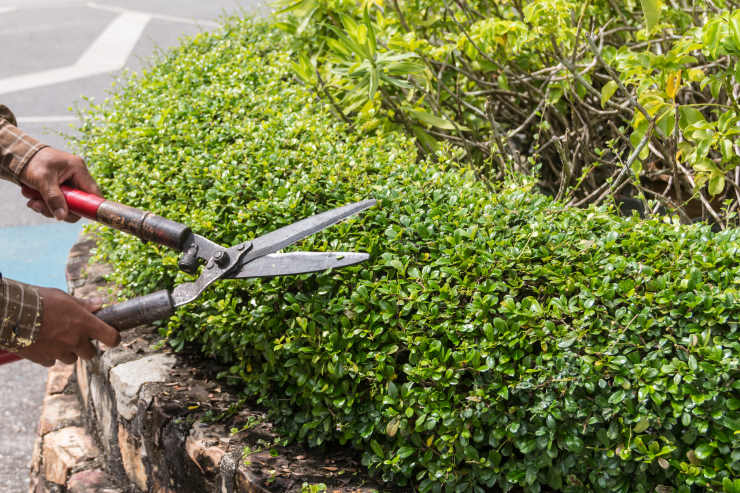
Most plant species in temperate zones get dormant for the winter. They slow down their development and hunker down for the winter now. Many trees and shrubs are dormant throughout the winter, making the late winter and early spring ideal for structural modifications. If you want to get the most out of your plant next year, you should prune it while it’s dormant.
Plants benefit from preemptive pruning because it allows them to redirect their resources into developing new, healthy growth in preparation for spring’s higher temperatures. When the leaves fall off in the winter, it is much easier to perceive the genuine form of deciduous plants.
The answer to the issue of when to prune depends largely on the timing of your shrubs’ flowering. After they blossom in the spring, plants like azaleas are cut down severely. Butterfly bush and other summer-flowering shrubs are best trimmed in the winter or early spring when they are dormant.
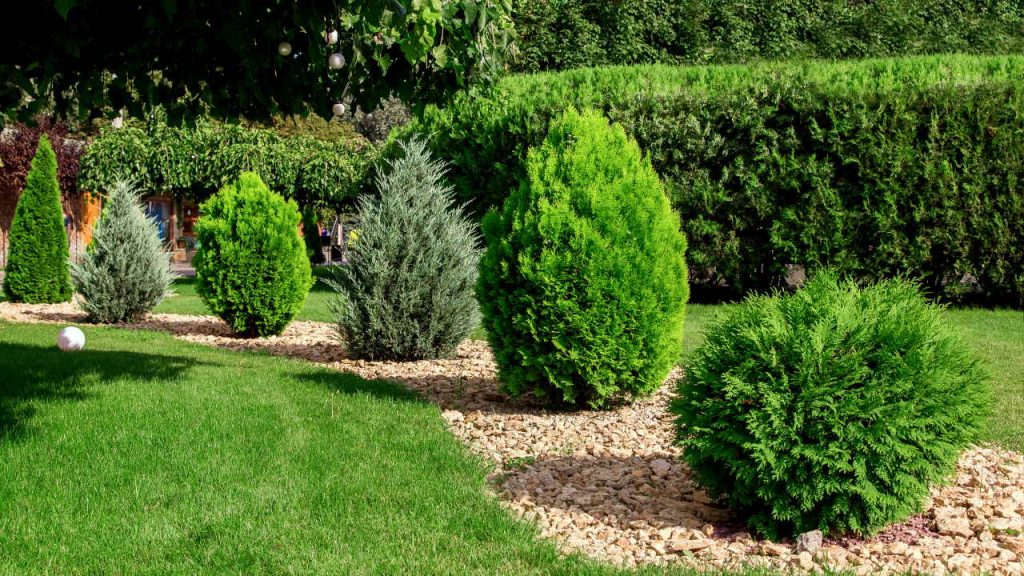
Why? It all depends on whether or not the blooms begin to bloom on “new” or “old” wood. The “new” wood on which the flower buds have grown should be pruned in late winter or early spring (i.e. the growth that will occur next spring). Abelia, butterfly bush, and dogwood are all examples of such plants.
If your bushes bloomed on “old” wood, wait until late spring or early summer (after the blooms have faded) to prune them (i.e. growth from the previous year). Azalea, deutzia and flowering almond plants are examples. If you trim them now, you risk killing the buds that will open later in the season.
If you want to trim your spring-blooming bushes, wait until after the flowers have gone. Also, spruce and fir trees, as well as yew, holly, and boxwood shrubs, should be pruned in late winter or early spring before they actively begin to develop. Pines are often pruned between June and July.
Where Do You Cut When Pruning?
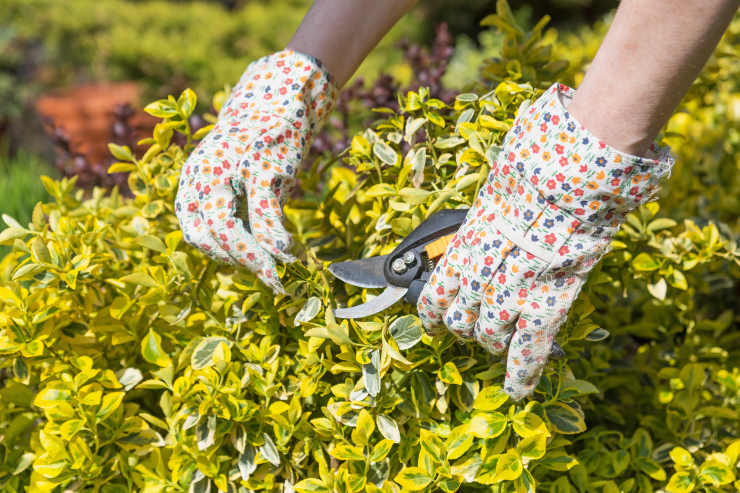
Late summer and autumn are bad times to prune. This stimulates the development of tender new shoots that will perish in the winter’s cold. Learning where to cut is essential. If you must cut back a plant, do it above a bud, shoot, or soil line. Do not ever discard a partial stem or branch. Don’t try to revive growth by ascending to a tree’s crown. This causes the plant to lose its healthy form and leaves it more vulnerable to disease, pests, and even storm damage.
Take away these things entirely:
- Dead branches: Even at repose, it is possible to tell the difference between a living limb and a dead one. An indication of a healthy branch is its flexibility, the presence of a green layer immediately under the bark, and the presence of green tissue inside the buds. Dead branches have no green coating and are brittle with brown, withered buds.
- Branches that girdle one another
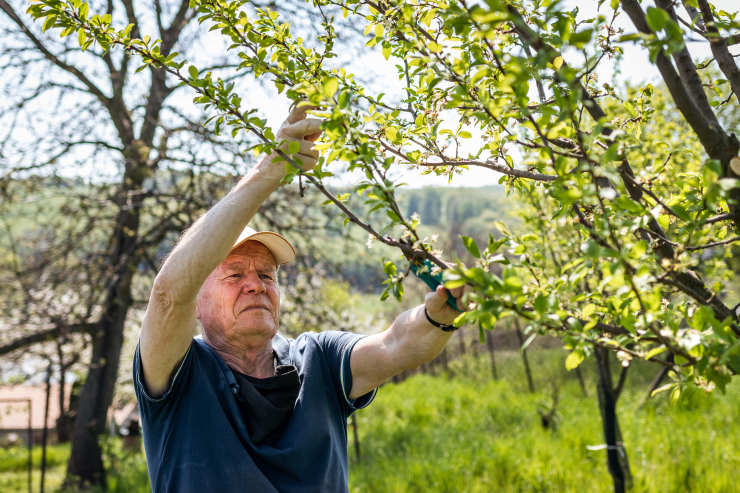
You should remove the following for trees (and possibly some shrubs):
- Branches that gradually keep moving to the center of the plant
- Suckers: These unwanted things emerge at the tree’s base and originate at the root system.
- Water sprouts: These shoots emerge nearly vertically from the most dominating branches of a plant.
- Narrow angled branches
You need to thin out the dense growth. A shrub or tree should have healthy leaves both inside and out. However, thick exterior growth prevents light from reaching the plant’s center. When light is only accessible on the plant’s exterior surface, it forms a thick outer shell while remaining ‘dead’ on the inside. This is particularly prevalent with continually clipped plants.
This “shell” sometimes prevents sufficient moisture from reaching roots underneath the plant. On thick vegetation, moisture deposited in the outer leaves may also remain owing to restricted airflow. This may result in leaf diseases that flourish in damp environments. You may boost your plant’s general health by decreasing thick growth and increasing light, rain, and air intake.
How Often Should Trees Be Trimmed?
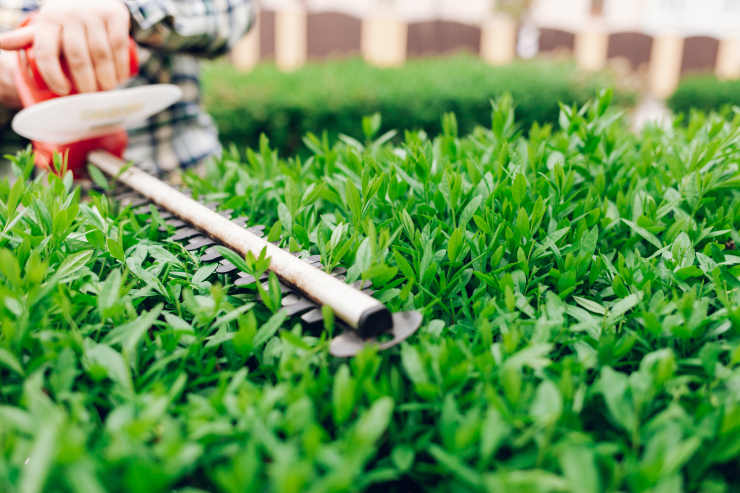
Some people are curious about how to prune trees and shrubs. One question to consider in this context is how frequently trees should be pruned. This varies from situation to situation, but here are some basic rules to follow:
- Pruning most mature trees of any variety every 3-5 years is sufficient.
- Most young trees should be trimmed every two to three years.
- Every year, fruit trees may be trimmed to yield greater quality and bigger fruit.
- Evergreen trees may thrive for many years without being pruned.
You may also question if trees need to be trimmed every year. As previously said, most trees may be trimmed every 1 to 5 years, depending on the species. While your trees may not need to be pruned every year, it is necessary to check on them or have them inspected to see if they need to be trimmed that year! Pruning should be done sparingly.
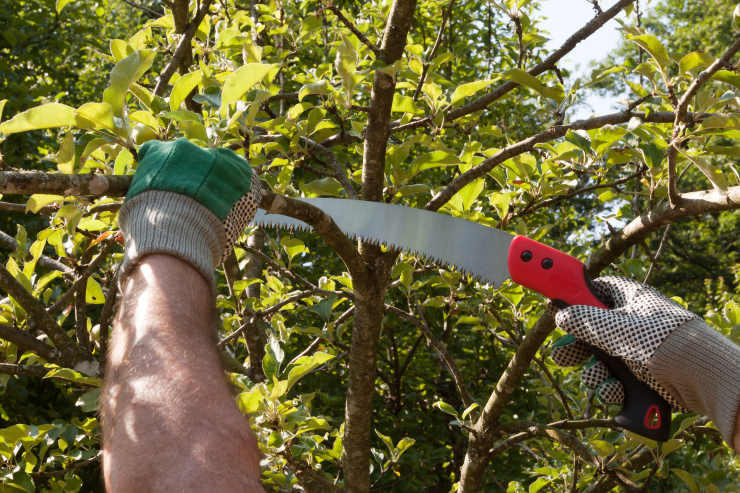
Excessive trimming reduces the number of leaves accessible to the tree for food production. Over-pruning a tree may cause it to weaken, enabling pests and diseases to take root. Excessive trimming may also leave the tree more vulnerable to wind damage, and poorly performed cuts can serve as entry points for disease and pests.
Proper tree trimming may aid in growing a tree’s roots, resulting in a healthy tree. Pruning a tree may also encourage the growth of new branches. Pruning trees is typically best done in late winter or early spring. You may trim trees as required in the spring, summer, and autumn, but you’ll obtain the finest results in the late winter or spring. Pruning your tree in late winter or early spring guarantees that stored energy is not wasted and that the tree develops leaves on branches that you trim later.
What Are the Four Different Methods of Pruning?
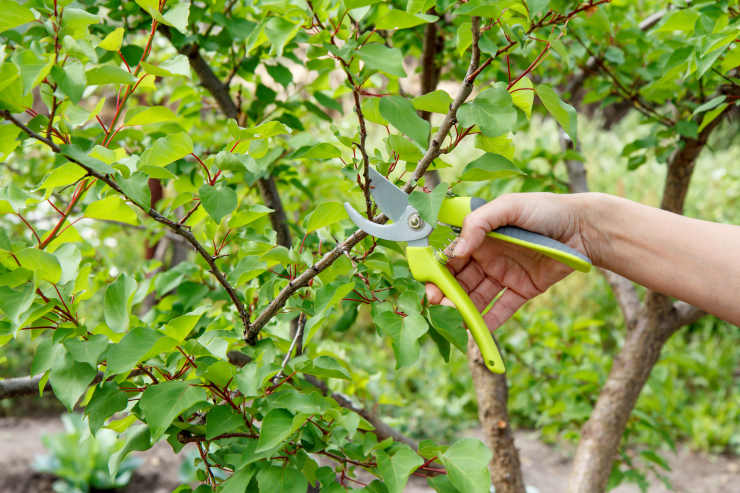
People who wonder how to prune trees and shrubs are also researching pruning methods. Four fundamental pruning cuts may be used to achieve various results. If you need to prune anything, you may use the following procedures.
Pinching: Pinch a terminal bud between your thumb and fingers to do a non-destructive pruning. This prevents the stem from becoming leggy and promotes a more bushy kind of development. It is often done with annual and perennial flowers, as well as a few types of crops. Small-leaved shrubs may benefit from this technique since it guides the plant’s development and provides a uniform form.
Heading: Heading entails cutting farther back on the shot than pinching. It’s common practice to trim side buds slightly above the leaf they’ve produced. Heading, often done with hand pruners, increases dense growth by stimulating buds immediately below the cut.
Shearing: Shearing is a kind of cap that does not seek to clip a bud and is traditionally used to make a spherical or square hedge or shrub. Plants are commonly picked when they have a cluster of side buds close together, making removing all but one at once easier. Many buds are prompted to open and develop new growth as a result of trimming; once you begin, you will want to continue the process frequently. This technique is appropriate for small-leaved plants because the damage would be less obvious since it directly cuts the leaves. For this form of pruning, use hand-held or electric hedge trimmers.
Thinning: It is a technique for reducing a plant’s bulk with minimum regrowth. The whole trunk or branch is severed at each cut, either back to its origin on the main stem or to its juncture with another branch. Taking side cuttings is preferable to taking head cuttings because you remove a larger portion of the trunk or branch and fewer clusters of undesirable sprouts. You may use either hand shears, or a pruning saw to perform thinning cuts, depending on the thickness of the branch.
What Tools Do I Need for Pruning?
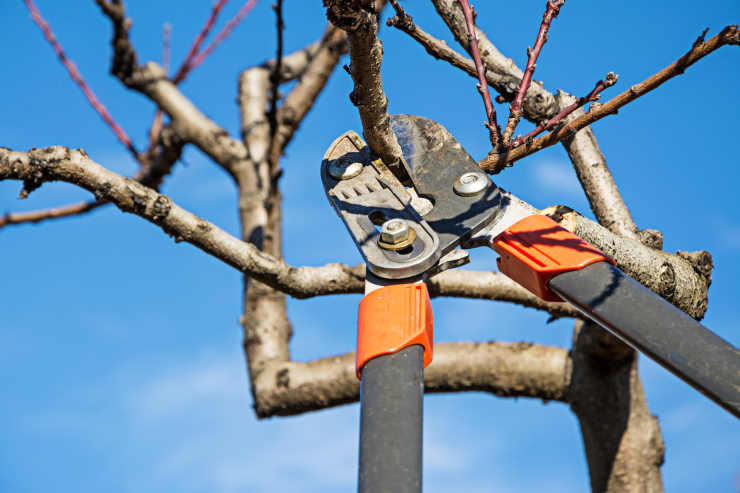
When the question of how to prune trees and shrubs is investigated, one of the most important questions that appear before us is which tools should be used during pruning. Before you start looking at pruning equipment, think about your safety. In detail, you’ll need to consider the tools and resources you’ll need for your pruning project. Because you’ll be working outdoors, you may need a hat, sunscreen, and sunglasses.
You may also require a pair of tough leather gloves and durable gear to protect your hands and body from plant materials and sharp cutting edges. If your task entails overhead trimming, you may additionally need eye protection. Cool water bottles are a wonderful idea in hot weather, and a nice pair of durable boots will protect your feet.
When it comes to pruning equipment, the variety might be somewhat daunting. You will discover that there are instruments for practically any trimming task conceivable. There are instruments for cutting, trimming, harvesting, shaping, pruning, and shaping plants into whatever form or shape you like.
However, pruning is just half of the work; you must also consider what tools you will need to clean up afterward, as well as safety equipment. Another consideration is keeping your instruments clean and sharp. When buying pruning equipment, it is usually advisable to stick to the sort of tool most suited for the pruning tasks you will be doing in your everyday work environment. You will utilize the following pruning tools:
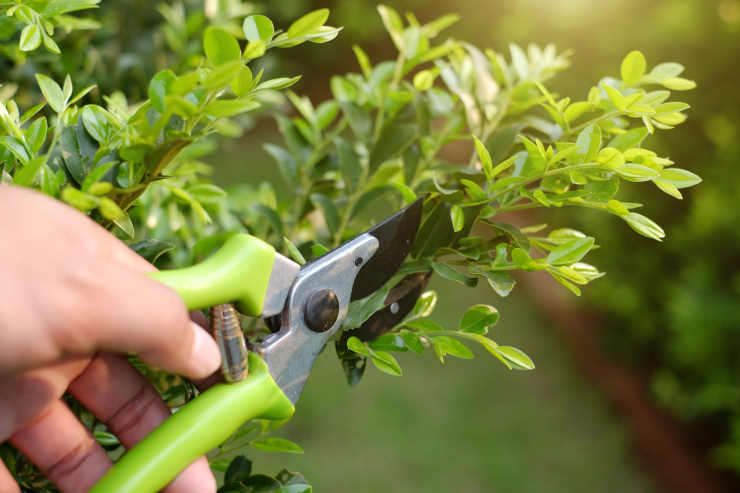
Hand Shears: Use for branches up to 1/4 inch in diameter. Scissor-style shears trim plants in tight, intimate quarters. Hydrangeas are best pruned using hand shears. Check that the shears suit your hand and are comfy.
Lopping Shears: For cutting branches up to 1-1/2 inch in diameter. Purchase lightweight shears for ease of usage. Extending the handles allows you to reach higher branches.
Pruning Saws: Use on branches with diameters more than 1-1/2 inches. For simple and safe pruning, coarse teeth are cut on the pull stroke.
Pole pruners: For branches more than 1 inch thick and beyond the hand’s reach. Pole pruners have a pruning shear head or saw that operates by rope motion. Look for pruners with a disassembled handle for convenient storage.
Hedge Shears: Hedge shears are often used for shrub pruning and shaping the plant by snipping new growth.
Conclusion

In this article, we’ve examined the answer to the question of how to prune trees and shrubs. Tree trimming offers several advantages. Over time, all plants and shrubs will acquire dead or decaying branches, leaves, stems, and flowers. Pruning them helps to maintain the whole plant healthy. It will also aid in the stimulation of new growth.
Maintaining your bush’s natural form and cutting it once in a while are important parts of keeping it alive and healthy. This will also promote good flower and fruit production. Flowers and fruits cannot form if there is insufficient energy for developing woody limbs or stems. Another reason to trim shrubs is to prevent animals and pests from entering or damaging the plant.
The natural form of the plants is preserved when you trim shrubs, trees, and hedges on your land after frequent and accurate pruning. This means you’ll have better plants and a nicer garden to enjoy with your family. A neatly manicured shrub, though, may benefit your family for reasons other than appearance.
Consider what happens if you don’t prune after a storm. Branches, leaves, and other debris are all over your garden. This is dangerous for both you and your family. Pruning should be done on a regular and right basis to safeguard your safety.
You may also be interested in:

